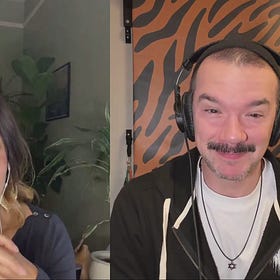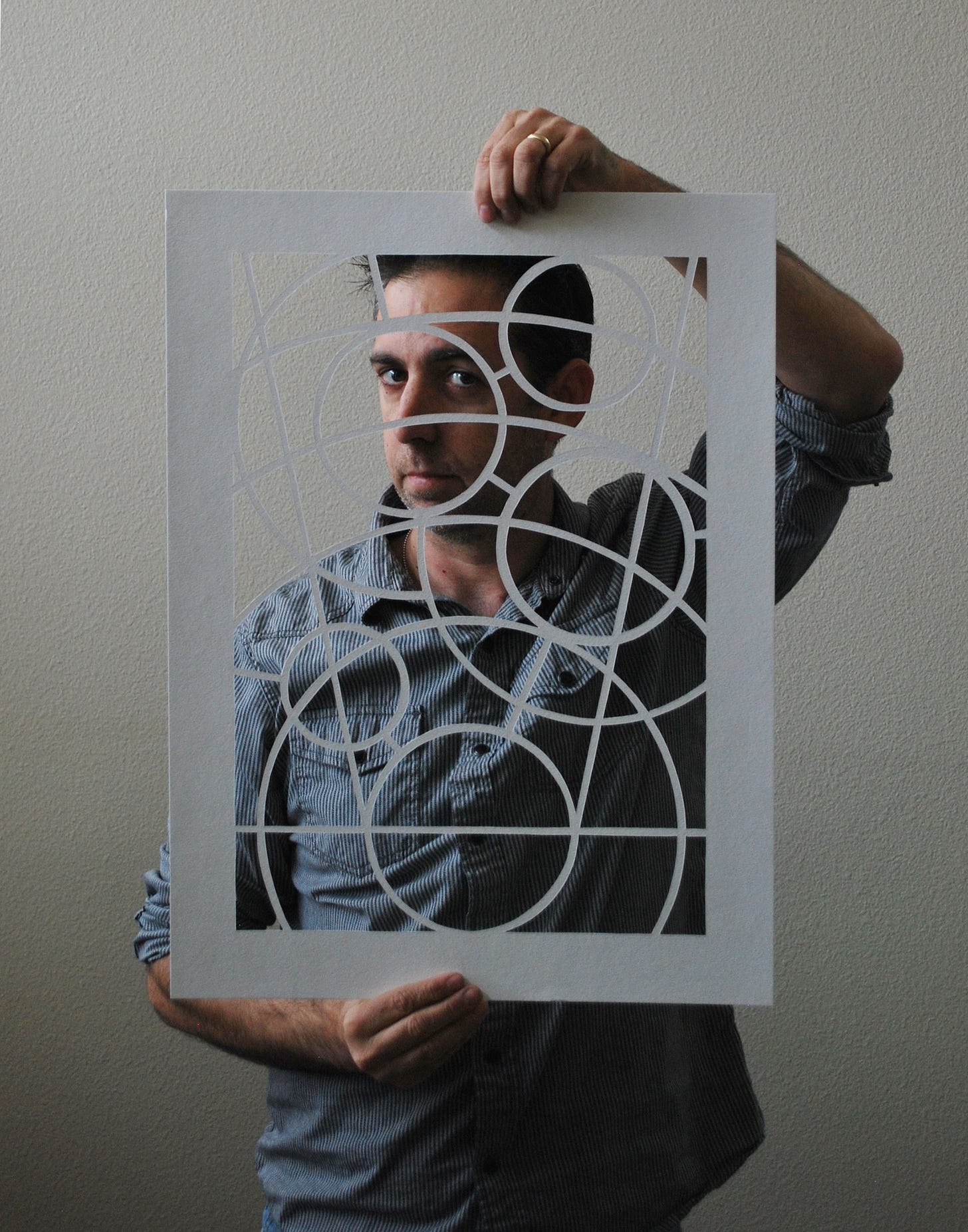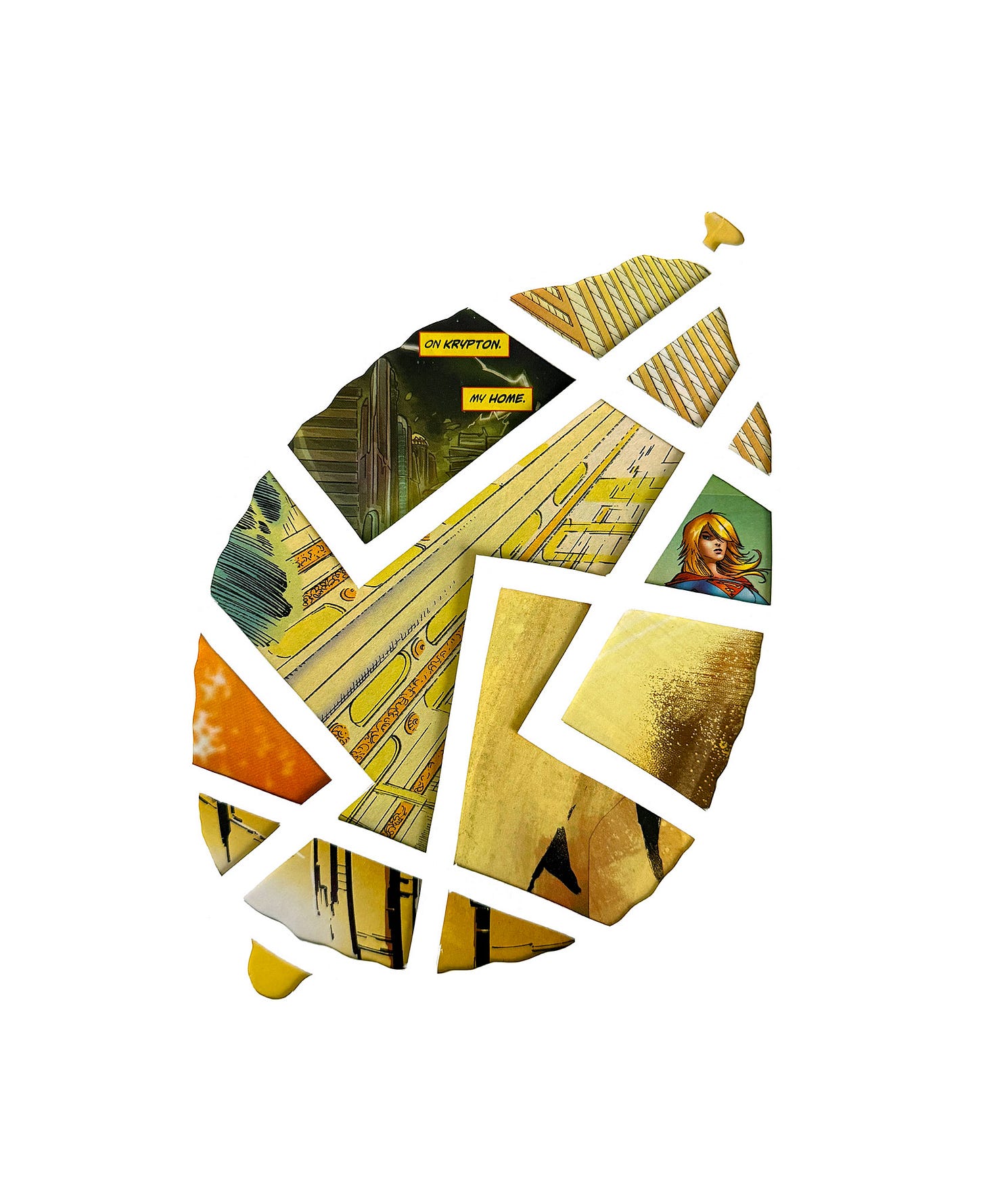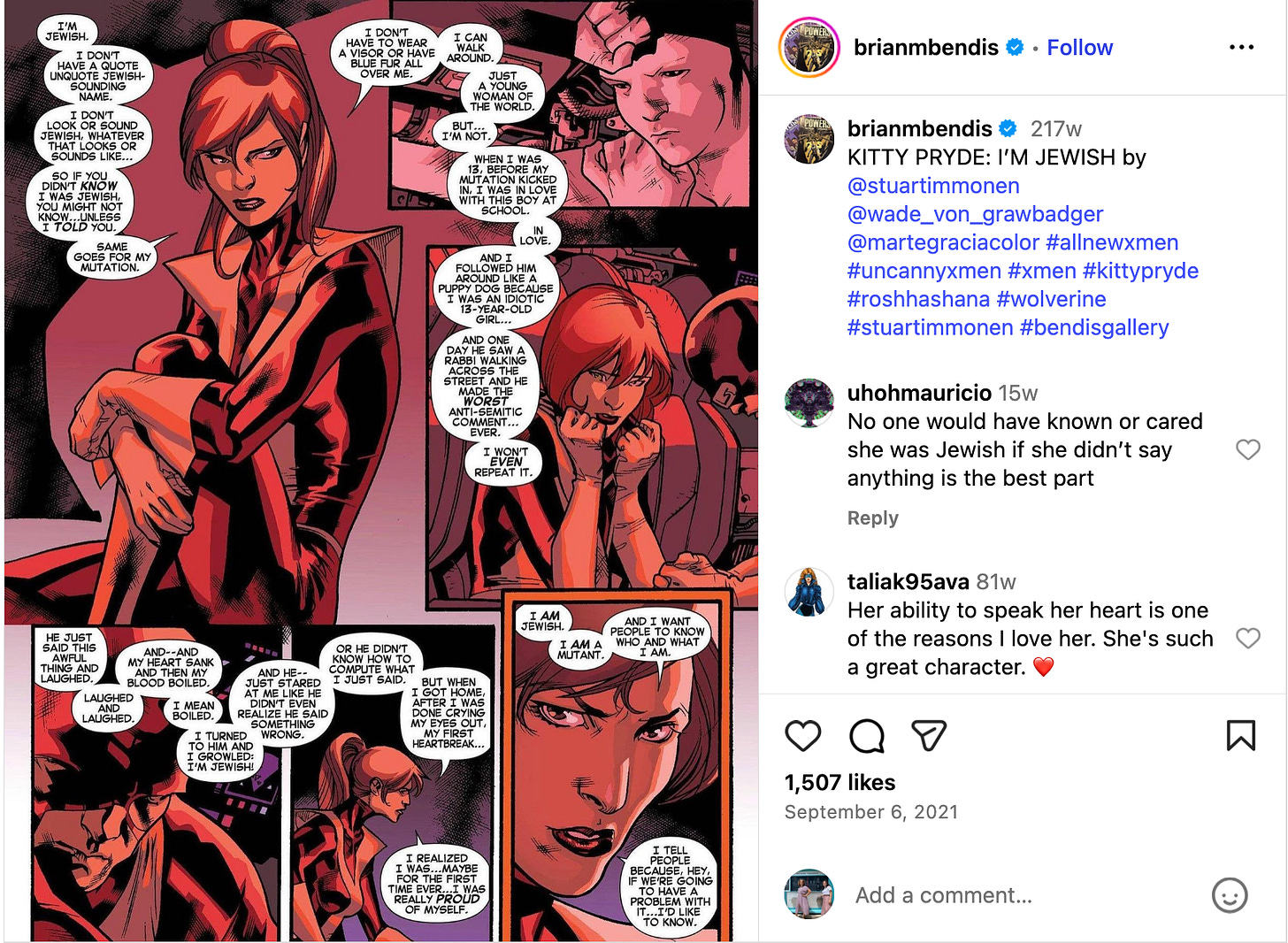Make Your Own Golem
A Jewish paper cut artist on the spiritual power of graphic novels.
But first…
As of last evening, election results were mostly settled, with a predicted progressive sweep coming to fruition in Seattle. Mayor Bruce Harrell appeared to be hanging on to his lead over socialist candidate Katie Wilson, but the Thursday ballot drop worked in her favor, pulling her to trail Harrell by just 5.7 percentage points. Seattle should be prepared for the possibility that she will pull ahead and win by a small margin — it has happened before.
In Tacoma, Washingtonians for a Brighter Future-backed Joe Bushnell won handily over DSA and Jewish anti-Zionist candidate Zev Cook. It’s not too late to start paying attention to socialist candidates. Last week, Recalibrate Portland’s Max Steele and I sat down to talk about politics in our respective cities and the bigger picture of DSA strategy, including its toxic love affair with the anti-Israel narrative.
Extra Cholent: Seattle and Portland Politics Chat
Last night, Max Steele joined me for a live conversation ahead of this week’s general election. Max’s writing about Portland politics, particularly the Democratic Socialists of America — whose members make up the majority of the Portland City Council — is painstakingly researched and darkly humorous. The DSA’s adoption of anti-Zionism and their politica…
Over in the school board races, Vivian Song, who was endorsed by The Kids Table and WBF, raked in 76 percent of the vote for Seattle school board position 5. Progressive Kathleen Smith maintains a lead over Sarah Clark, whom the WBF and Jewish Voters Guide endorsed.
Speaking of Seattle Public Schools, the district hired a new superintendent this week, and his name is…Benjamin Shuldiner.
Holy moly. SPS hired a Jew.
Will this be good? Bad? Neutral? Could it get worse? (The Cholent reached out to Shuldiner for an interview and is eagerly awaiting a reply.) According to a bio about his faith for the School Superintendent Association, Shuldiner is a secular humanist who invokes tikkun olam (repairing the world) as a guiding principle.
But don’t panic just yet. Despite considering himself a secular humanist, he refers to God and goes into a bit of thoughtful depth about his relationship to Judaism:
In Judaism, though, learning never is just about memorizing facts. It is about asking questions, challenging assumptions and being expected to engage fully in the conversation. At Passover, we don’t just quietly listen to someone retell the Exodus, we taste the bitterness of slavery, dip wine for the plagues, we read aloud from our own lips and create specific places for our children to ask questions and incorporate themselves into the history. That is how I believe schools should be: places where students are active participants in their own learning, where curiosity not only is allowed but celebrated and where each child can see themselves in their education.
OK, the guy’s been to a seder. Good start. Bonus: he’s from New York and just looks normal. It doesn’t take much at this point. I’m sure Shuldiner won’t utter a peep about Israel, but I am cautiously optimistic that he will take the concerns of Jewish and Israeli students in his district with the seriousness that many of them have deserved and not received.
“It sort of dawned on me how much the stories in these comics really worked as a foil for our Jewish stories.”
I get a lot of press releases. Many of them are about interesting events but have no connection to Seattle. But when I opened a press release and batch of images from Isaac Brynjegard-Bialik, of California, about an upcoming paper cut/pop culture Torah Shabbaton at Kol HaNeshamah in Seattle, I was intrigued.
Isaac creates paper cuts using his childhood graphic novels and Jewish artifacts. The results are layered, colorful messages about justice, relationships, and spirituality. I thought an interview with Isaac about his artistic journey could be something we all need during some tense times.
Isaac and his wife, Rabbi Shawna Brynjegard-Bialik, will be at the West Seattle progressive synagogue November 21-23 to lead a meaningful weekend in which participants can make their own paper cut Golems and enjoy a “pop-culture infused visual sermon on Parashat Toldot.”
Learn more: https://khnseattle.org/uncategorized/shabbaton-nov-21-22
The Cholent: Tell me about what you will be doing when you come to Seattle.
Isaac Brynjegard-Bialik: My wife is a rabbi in the Reform movement, and for about 10 years we’ve taught together around the world. One of our residencies this year will be at Kol HaNeshamah in Seattle. We’ll lead a range of programs that blend Torah, comics, pop culture, and hands-on art.
Friday night we’ll give a visual sermon as part of services. My wife crafts the sermon, I connect it to pop culture, and together we project slides that mix entertainment and scholarship. It’s something we began doing with our kids — talking about Torah and comics — and it gives people a fresh entry point into Torah: how it connects to modern life.
Over the weekend we’ll also lead community art projects, including a fingerprint mosaic made entirely from participants’ prints. Another workshop is “Make Your Own Golem.” I began cutting Golem figures from comic books in 2020 as a reflection on safety and protection, a long-standing theme in Jewish art. I made 72 over 18 months and began teaching others to do the same. The Golems people create mirror the times: early ones responded to COVID, elections, and anti-Semitism; later, to Ukraine and community healing; recently, again to rising anti-Semitism. We’ll offer this workshop in Seattle and at the Limmud Conference in the U.K.
Participants cut a top layer of watercolor paper with X-Acto knives over a collage base of comic-book pages, often themed to the week’s Torah portion or local ties. For Seattle, I’ll bring Green Arrow comics, since that hero is based there. The method mirrors my studio process: using comics as a lens for Jewish text and story.
Why comics?
Comics were largely created by Jewish artists, like Stan Lee, Jack Kirby, Jerry Siegel, and Joe Shuster, whose work carries a moral vision rooted in Jewish ideas of justice. My art draws on that lineage, using the language of comics to explore Torah narratives and Midrash. For me, the dialogue between these worlds — Jewish tradition and popular storytelling — offers a vivid, modern way to keep our ancient stories alive.
I’ve been reading comics for almost 50 years. I’ve been cutting paper for about 30, and I’ve been putting the two together for the past 20 years or so. It’s something that just sort of emerged organically.
How did you get into this?
I grew up Jewish in Los Angeles. My wife and I met when we were in high school at a Jewish camp program. She was 15 and already knew she wanted to be a rabbi. Talk about having your life planned out. When we moved to Israel in the mid-’90s for her first year of rabbinic school, I needed something to do. I was hanging out and looking at artists in their studios, including a few paper cutters. And I thought, oh, that seems interesting.
So I bought a knife and a cutting mat, and I started cutting paper in Jerusalem, and it just really struck something within me. Paper cutting is a traditional Jewish art form. I tend to think that it’s because it’s inexpensive, low barrier, and very portable. If the pogroms are coming, if you need to run, you just go. If you’ve got a 200-pound block of granite, like, what are you gonna do? Oil paint takes so long to dry, but with paper cutting, all you need is something sharp and something flat.
Jews have been doing this for quite some time. It was a traditional art form used specifically for the festival of Shavuot. There’s a tradition of Shavuot paper cutting that goes back to the 1400s in Galicia, I think.
So I cut paper for a while and moved back to the States. We started having kids. And at one point, my oldest kid had hit that age where she was ready to start free reading, and I thought, I wonder if she would enjoy comics the way that I always did.
I was looking through my old comics, and I’m looking at this unfinished paper cut. I’m looking at the comics and I’m thinking, there’s something here. I started cutting a few comics up to see how they would work in context of the paper cutting. And then it sort of dawned on me how much the stories in these comics really worked as a foil for our Jewish stories.
You’ve got the comic books, which are created very much by a very Jewish artistic industry. And then you’ve got them dealing with those Jewish themes that became universal, like justice and the Golem, and then you’ve got American Jewish. It’s all these layers.
Whether it is something like the brothers Jacob and Esau, or the sisters Rachel and Leah and their relationship — and how that could be reflected in Thor and Loki, for instance, in Marvel comics — or looking at mother-daughter relationships, you know, noticing that there isn’t a lot of conversation between mothers and daughters. Do we have Sarah and Rebecca talking? No. Do we have Rebecca and Rachel and Leah speaking? No. Comics surprisingly provided some ideas on what Midrash about those characters would look like.
In Black Canary, they have these wonderful conversations about what it means to be a hero and about that balance between helping others and helping yourself. And I thought, these are the stories that I would want to be sort of listening to in Torah and Midrash, which is this continuing conversation in which we look for those gaps and opportunities to tell more stories — to find more truths about our stories.
Fascinating. Who is your favorite comic book or your favorite character, or your favorite writer, artist, or all of the above?
I come back to one of my favorite characters, Kitty Pryde, possibly my favorite character in comics.
So if you can imagine me in junior high school, you know, 13, 14 years old, and I start reading. I get handed a copy of The X-Men, created originally in the ’60s by Stan Lee and Jack Kirby, two nice Jewish boys from New York. The X-Men is a great comic book. It’s got all these mutants who are superheroes, but the world hates and fears them, and they have to figure out how to be heroes.
But in the door walks Kitty Pryde, this 14-year-old girl from Chicago, who is just coming into her powers as a mutant. And she is introduced by John Byrne and Chris Claremont, who were then writing and drawing The X-Men, with a Jewish star around her neck.
And immediately, in that first issue, she mentions it’s her first time being away from her parents for Hanukkah while she’s at this mutant mansion. So immediately, young Jewish kid, about my age, trying to figure out where I fit in this larger world. I was hooked instantly. And Kitty Pryde continues to be, no matter who writes her or who draws her — even to the present day in the comics, and sometimes in the movies — she’s an explicitly Jewish character. In the comics, we always see her in her Jewish star. She talks surprisingly often about how being Jewish informs her as a hero.
Brian Michael Bendis, who’s a Jewish comics writer currently based in Portland, Oregon, did some wonderful things with Kitty Pryde. She passes as a regular human and doesn’t look like a mutant, and she’s Jewish but passes as non-Jewish. Those two things combine to make her want to seek justice. It’s incredible storytelling.
Kitty’s certainly up there, and obviously as a Jewish kid, it’s the Jewish heroes that I always respond to. So Ben Grimm and the Fantastic Four, Moon Knight, Ragman, Sabra. They don’t have to be Jewish to be great heroes — there are plenty of non-Jewish superheroes — but there’s something about seeing myself reflected in the stories that really gives me that connection.
And then on the other side of that, in terms of Biblical history or Midrash or Jewish history, who is most inspiring? Are there themes or characters or ideas that keep emerging?
I think of Torah as the ultimate source material. It’s the ultimate influence, which we take as written down by a bunch of people over a long period of time, whether we say divinely inspired or written by God, or however we come to our understanding of its importance. The fact that we are encouraged to have direct access to the text, that from the age of bar mitzvah we are expected to consider the Torah as ours in the same way that everyone else does. We can read it, we can look at it.
And the beautiful thing about Midrash, which my wife and I refer to as Jewish fan fiction, is that it’s a continuing process. Midrash is a conversation that continues to this day. We are in conversation with everyone who has read Torah before us. Our understanding of Torah is not in a silo where we decide “it means this to me right now” regardless of what other people have said, nor is it something where someone else tells us what it means. Midrash is something where we engage with the text and with each other.
I feel like my art is, I hope, part of that conversation. It’s not just a statement or an answer or my interpretation, but it should create questions and be responsive to other people’s art, writing, and Midrash.
I want to ask you about one of your pieces, called When You Have Gathered.
Yes. It’s primarily made with Battlestar Galactica comics. It’s a portrait of Jerusalem as a place of return. It’s our home. That’s what Battlestar Galactica is. It’s about a people trying to get either back to their ancestral home or searching for it. The words “when you have gathered” appear in a comic panel, and I believe “eventual return” does too. There’s a little old Ashkenazi transliteration, “Next year in Jerusalem.”
For me, Jerusalem is my occasional and eventual home. Though I am not there now, my heart is in the East. I think constantly of my family and friends who are there. Jerusalem has shalom — peace — in its name, and that means something when we fill our prayers with Zion, with our ancestral homeland, with the idea of being a light to the nations. It’s about what it means to gather, what happens once we have gathered, what comes next. America is going through something similar to Israel right now, trying to come together, trying to be a people.
The excerpt of Battlestar Galactica text in this piece reminds me of the blessing that God gives Abraham, about making his descendants as numerous as the stars.
Yes, that all ties to Jerusalem and to so many other parts of history and all of our holidays. The beauty of this piece is that some of it is hidden. There are layers and layers of comics. Sometimes I’ll put something down and then cover it up. I love hearing what people see and think when they look at the work. What are those missing words, what does it mean, what connections do they make?
When I build these pieces, I look through my comic collection for something that connects to what I want to say. Sometimes a panel demands to be used. It’s a collaboration between me and my comics.
I hope that even people who don’t consider themselves comic book readers find something that speaks to them.
Learn more, and if you are in the Marin area, check out Isaac Brynjegard-Bialik’s exhibition at the Osher Marin Jewish Community Center.
Announcements
Check out the Seattle Jewish community calendar.
Candlelighting in Seattle is at 4:24 p.m. The parasha is Vayera.
Order your Mah Jongg Card
Order your 2026 National Mah Jongg League Playing Card to benefit Hillel UW! Did you know Hillel UW has become a center for community Mah Jongg? Place your card order and a portion of the cost will be donated to Hillel UW by the Mah Jongg League:
https://www.hilleluw.org/programs/community-mah-jongg-hillel-uw/
Community Conversation
Washingtonians for a Brighter Future and community partners are excited to host a town hall conversation with a bipartisan group of Washington State legislators who traveled to Israel in September. Rabbi Brett Weisman of Temple De Hirsch Sinai will moderate the discussion on Sunday, December 7, at 3:00pm on Mercer Island. Details and registration: https://wa4future.org/2025-12-07/
Tales of the Alchemysts Theatre Presents: Surviving Survival
Chava Rosenfarb was a survivor of the Łodz ghetto and the Auschwitz-Birkenau death camp. She later settled in Canada and continued her prolific writing in both Yiddish and English. These stories are newly translated from the original Yiddish by her daughter, Goldie Morgentaler. As Holocaust-themed stories, they are atypical in that they do not revisit the horrific details of life and death in the camps. They are spellbinding in their depiction of the struggles of Holocaust survivors trying to make sense of life after living through unspeakable suffering and profound loss.
November 9, 2025 at 2 pm: Stroum Jewish Community Center, Mercer Island
Tickets: https://sjcc.org/event/tales-of-alchemysts-theatre-surviving-survival/
November 14, 2025 at 7:30 pm: West of Lenin Theater in Fremont
Tickets: https://click4tix.net/patrons/ticketDetails.html?_id=67
November 15, 2025 at 7 pm: Vashon Havurah, 15401 Westside Hwy SW
Vashon WA 98071
Tickets: https://tinyurl.com/bdfu3ktk Select $25, then select “General Fund” from the drop down menu
November 16, 2025 at 3 pm: Polish Home Association
Performance is free, no registration necessary: https://polishhome.org/
Check out the Seattle Jewish community calendar.
Candlelighting in Seattle is at 5:34 p.m. The parasha is Lech Lecha.
Yiddish Songs of Change and Resilience
Saturday, Nov 22 at 7:30 PM
Herzl-Ner Tamid synagogue is hosting the Golden Thread Ensemble, featuring Grammy award winner Lorin Sklamberg (The Klezmatics), Latvian Yiddish singer Sasha Lurje, and Seattle-raised violinist Craig Judelman. Experience powerful new arrangements exploring Yiddish music’s role in justice, equality, and Tikkun Olam.
Register: https://h-nt.shulcloud.com/event/scholar-in-residence-weekend1.html
Washington State Jewish Historical Society’s 2025 Annual Meeting
Please honor Meta Buttnick Award recipient Joel Arensberg, and hear about our critical work in the community to preserve Jewish History. Wednesday, November 12 at 7 pm, Eastside location provided upon registration. Register at: WSJHS Annual Meeting 2025 | Washington State Jewish Historical Society
Shoutouts
Mazel Tov to Oren and Meital Kaufman, of Elkana, on the birth of a son, Matan. —Stuart Kaufman







